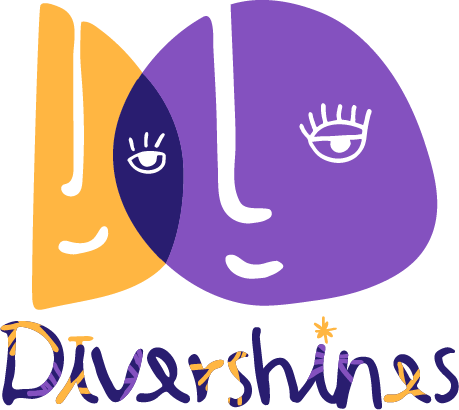The Link Between Autism and Hyperlexia: Signs, Challenges, and Solutions

Have you heard that children with autism learn to read on their own? Sometimes, autism and hyperlexia go hand in hand. Hyperlexia is an early and intense fascination with reading, often observed in children with autism. It’s important to explore the signs and understand how both conditions can be managed.
What is Hyperlexia?
Hyperlexia is defined by an advanced ability to read at an early age, often before the age of three. Children with hyperlexia may be able to decode words and read fluently but struggle with comprehension and communication. There are three types of hyperlexia:
- Hyperlexia I:Typical children who read early.
- Hyperlexia II:Children with autism who read early.
- Hyperlexia III: Children who show early reading skills along with some autistic traits but eventually outgrow them.
The signs of hyperlexia include an intense fascination with letters and numbers, early reading skills, and difficulties with spoken language and social interactions.
The Connection Between Autism and Hyperlexia
According to a study published in the Journal of Autism and Developmental Disorder, around 6-14% of children with autism exhibit hyperlexic traits. Hyperlexia often manifests in children with autism as an early obsession with letters and numbers and the ability to read fluently without formal instruction. Unlike typical early readers, children with autism and hyperlexia may not understand the content they read and often have difficulties with verbal communication.

Identifying Hyperlexia in Children with Autism
Early identification of hyperlexia is essential for effective intervention. Parents and educators should look for signs such as early reading skills, intense interest in letters and numbers, and challenges with verbal communication and social interactions. Diagnostic criteria for hyperlexia involve a comprehensive evaluation by pediatricians, psychologists, and speech and language pathologists. The evaluation typically includes assessments of reading skills, language comprehension, and social communication abilities.
Challenges Faced by Children with Autism and Hyperlexia
Children with autism and hyperlexia face unique challenges both academically and socially. In a typical school setting, they may excel in reading but struggle with comprehension and interaction with peers. Social and communication difficulties can lead to isolation and frustration, impacting their overall well-being. Additionally, sensory processing issues and repetitive behaviors common in children with autism can further complicate their educational experience. Addressing these challenges requires a multifaceted approach involving tailored educational strategies and therapeutic interventions.

Support Strategies for Parents and Educators
Creating a supportive learning environment is crucial for children with autism and hyperlexia. At home, parents can use visual aids and structured activities to enhance comprehension and communication skills. Effective communication techniques, such as using simple and clear language and encouraging verbal interactions, can significantly improve their social abilities. In educational settings, individualized learning plans that leverage their reading strengths while addressing comprehension and social interaction challenges are essential. Collaborative efforts between parents, teachers, and therapists can create a consistent and supportive environment for the child’s development.
For more tips on managing the complexities of raising a child with autism and hyperlexia, parents can consult our post on Overwhelmed Parents.
Therapeutic Interventions and Resources
Therapeutic interventions play a vital role in supporting children with autism and hyperlexia. Speech and language therapy can help improve communication skills, while occupational therapy can address sensory processing issues. Other therapies, such as ABA or RDI, can be effective in managing repetitive behaviors and enhancing social skills. There are several resources available for parents and educators seeking additional support. Websites like the Autism Society and the Hyperlexia Handbook offer valuable information and tools for managing the unique challenges associated with autism and hyperlexia.
Frequently asqued questions
Early signs of hyperlexia include an intense fascination with letters and numbers and the ability to read at a very young age, often before they can speak fluently.
Unlike typical early readers, children with hyperlexia may not understand what they read and often have difficulties with verbal communication and social interactions.
Effective therapies include speech and language therapy, occupational therapy, RDI therapy, and ABA therapy.
Yes, with appropriate support and individualized learning plans, many children with autism and hyperlexia can successfully attend conventional schools.
Websites like the Autism Society and the Hyperlexia Handbook provide valuable information and resources for parents and educators.
REFERENCES
- “Autism Spectrum Disorder.” CDC, Centers for Disease Control and Prevention, https://www.cdc.gov/ncbddd/autism/facts.html.
- “Hyperlexia: Reading Precocity and Its Clinical Implications.” Journal of Autism and Developmental Disorders, https://link.springer.com/article/10.1007/s10803-012-1614-7.
- “Speech and Language Therapy for Autism.” Autism Speaks, https://www.autismspeaks.org/speech-language-therapy.
- “Occupational Therapy for Autism.” Autism Society, https://www.autism-society.org/living-with-autism/treatment-options/occupational-therapy/.
- “Case Study of a Child with Autism and Hyperlexia.” Pediatrics, https://pediatrics.aappublications.org/content/early/2020/10/28/peds.2020-049579.


